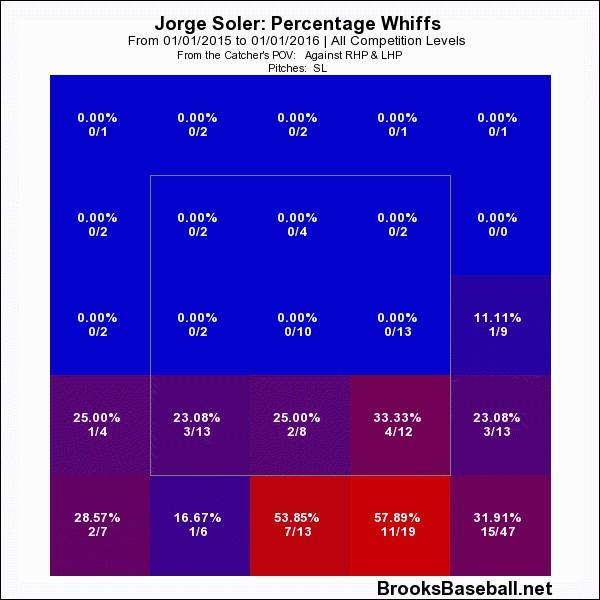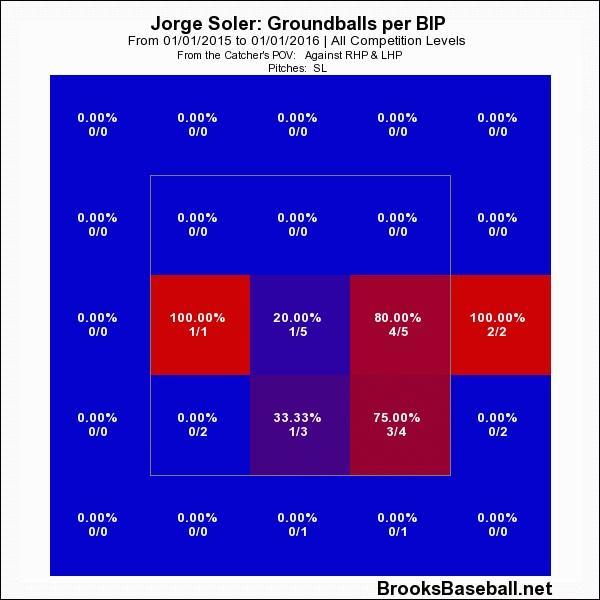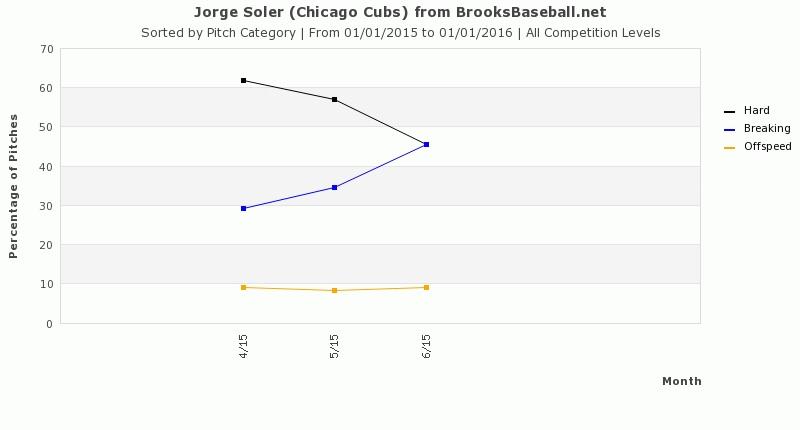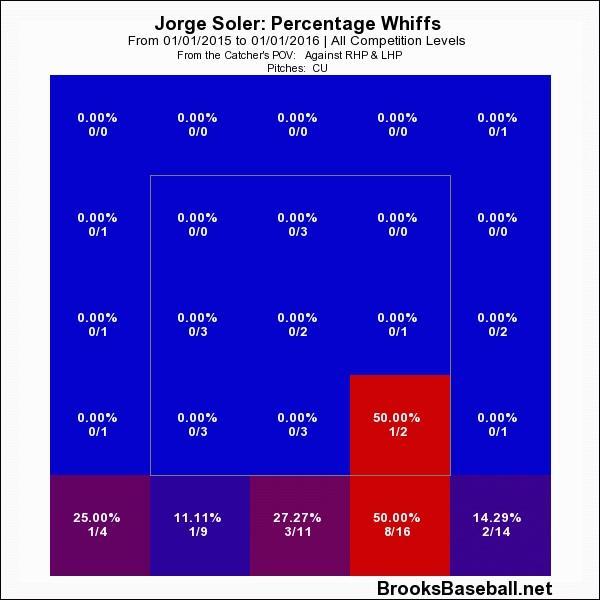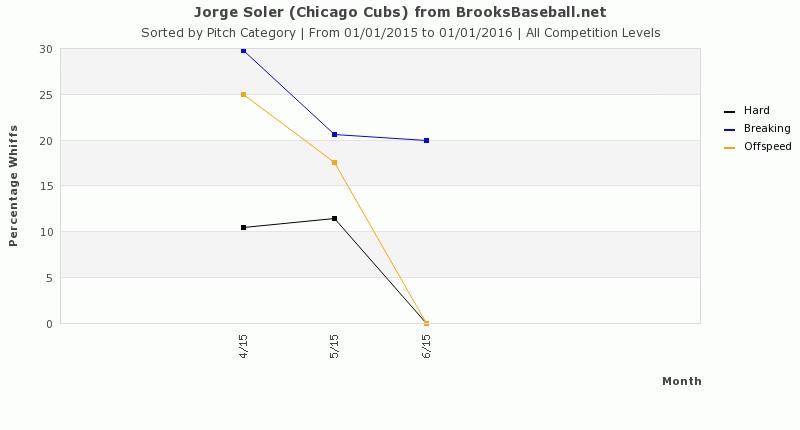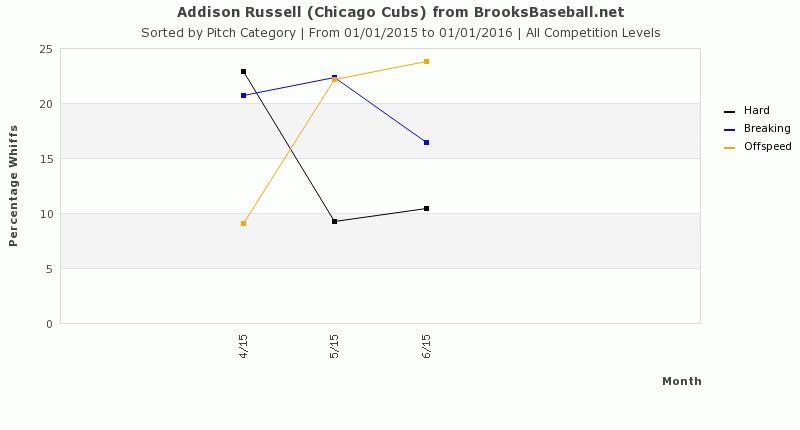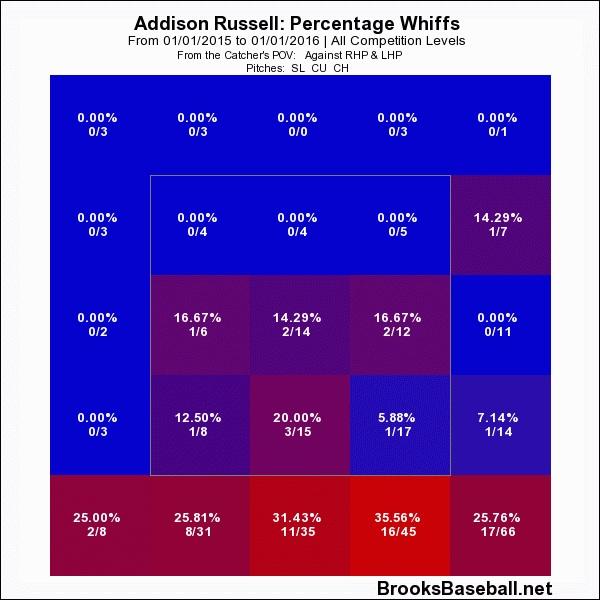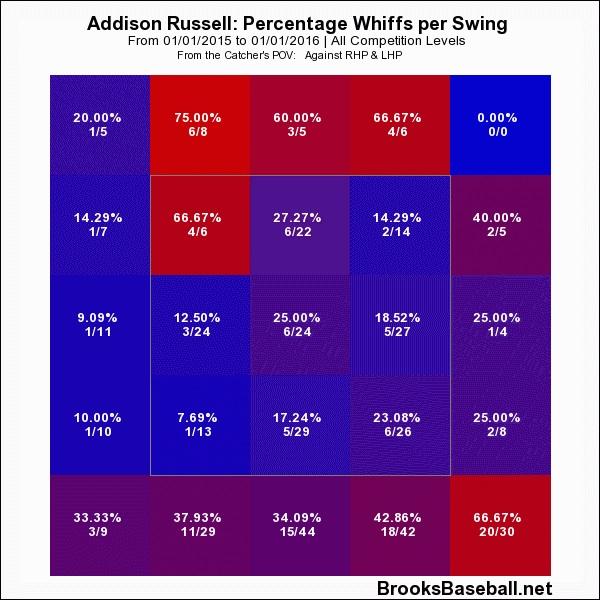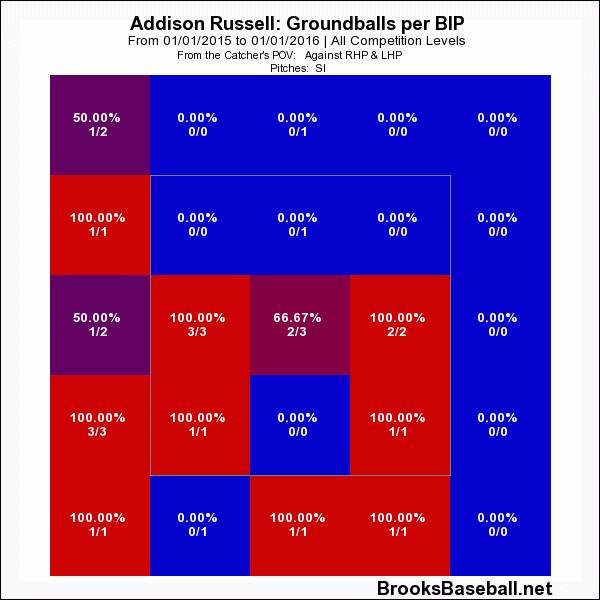We’ve all been made well aware of the fact that in 2015, the Cubs are striking out quite frequently. Currently, the North Siders are just below the Houston Astros in highest strikeout percentage in baseball, the Astros at 25.1 percent and the Cubs barely trailing them at 24.7 percent.
There is one thing that immediately comes to mind that these two clubs have in common when you think of this high strikeout rate—their youth. Both teams are flush with exciting young talent that most definitely deserve the roster spots they’re occupying, but they still bring with them the typical flaws that many young players (even Kris Bryant) carry with them into the major leagues: the insatiable tendency to swing and miss.
Of course, when you look at the list of Cubs hitters who are striking out at the highest rate so far in 2015, I’m sure you’ve already figured out which of them are atop the leaderboard. Indeed, it’s the kids: Jorge Soler (32.2 percent), Addison Russell (31.1 percent), and Bryant (29.5 percent). The next highest on the list is Dexter Fowler, but he’s striking out at a lesser rate (22.8 percent) than the rest of the group and has already set this as the bar for his normal K rate; the youngsters are still defining themselves. In Bryant’s case, he’s working the count so well and takes such high-quality at-bats, that his strikeout rate doesn’t really hurt him or the team. In all likelihood, as he continues to develop, he will be able to take that down a few points and produce at an even higher level. Bryant is also currently seeing a walk rate of 13.1 percent, a large difference from Soler and Russell, who are both under 8 percent.
So what is it exactly that serves as Russell and Soler’s kryptonite at the plate? Breaking pitches. These two are absolute suckers for hacking at pitches that have the average viewer thinking, “What the heck are you swinging at that for?” I understand, hitting a baseball is hard, and when you’re seeing major-league stuff for the first time (Soler only played in 24 games last season, so let’s give him a break), it can be quite the challenge. We may curse at the sky while these guys swing at pitches high and low in the zone, but we all know that if we went up there we’d probably be swinging at letter high offerings and pitches in the dirt like it was our job. Baseball is not easy.
Soler’s weakness seems to be the slider, and unfortunately—except for four-seamers—this is the pitch he sees most frequently.
Check out the location of the sliders he’s whiffing on in 2015. Beware, it’s ugly.
He’s whiffing almost entirely in the lower half of the zone. When Soler offers at a slider, it’s a swing and miss 53.2 percent of the time. And when he’s not whiffing on the sliders low and outside the zone, he’s making contact on the ones right down the middle, but more often than not, putting them on the ground.
I’m no scientist over here, but I can assure you this is probably why Soler is seeing sliders so often in two-strike counts. He’s seen 60 sliders when he has two strikes on him (second-most behind the four-searmer) and he’s struck out on a slider 20 times this season; it’s the pitch that has sent him back to the bench in frustration most often this season.
When Soler is making contact on sliders, it’s not very strong contact as he currently has a .095 batting average against sliders. And pitchers are taking note of Soler’s struggles against the breaker.
The opposition’s use of breaking pitches is rising, and quite drastically. There has been some improvement though for Soler—his strikeout rate in April was at 36 percent, while batting a line of .247/.319/.395. In May, Soler lowered his strikeout rate to 30 percent, and was batting a much more appealing .288/.336/.423.
Curveballs aren’t exactly Soler’s friend either, but they’re much kinder to him than the sliders. Soler sees virtually all of his curveballs low and outside, and though he swings at them, he’s got a little better of an eye.
He’s also much more cautious with the curveball in two-strike counts, which is probably why Soler has seen so many more sliders than he has curveballs in 2015.
While his whiff rates dipped considerably on breaking stuff in May, he’s still whiffing all too often on them.
Currently sidelined with a sprained ankle, Soler is eligible to return off the disabled list and may be sent out on a rehab in the very near future. The Cubs have used a mix of Junior Lake, Chris Denorfia, and Mike Baxter to fill in for Soler in right, and while they’ve performed well at times, the Cubs would certainly welcome the powerful Cuban’s presence in their lineup.
Soler was batting .265/.322/.402 on the season before his trip to the DL. We all know that after putting up a .903 OPS with five home runs (one more than he has this season in over double the plate appearances) in his quick stint last season, the expectations for Soler’s bat is much higher than what we’ve seen. By Soler’s hopeful late-June reinstatement to the lineup, we will finally have reached the pinnacle of summer on the North Side, with the warm winds (hopefully) blowing out more often than not, leading to Soler producing at a much higher clip than the colder environs in which he was clearly uncomfortable earlier in the season. As long as he can begin to lay off the breaking pitches and refine his plate approach just a touch, we could see some of that incredible power that Soler is consistently capable.
Russell is somewhat of a different case. Entering play Tuesday, he had a line of .250/.320/.410, hardly terrible, as he’s only just 53 games into his major-league career and experiencing a lot of new and exciting things he hasn’t seen before—like major-league breaking and off-speed pitches, which, similarly to Soler, are his weakness too.
As this chart illustrates, Russell is having the most issues with off-speed pitches at the moment. Unlike Soler, Russell isn’t just baffled by one pitch, rather, there are quite a few offerings with which he struggles. Russell has just a smattering of red flag-type trouble on curveballs, sliders, and changeups that amount to one larger problem. The issue is not the pitches themselves, but the location of what he’s swinging at.
This is a map combining Russell’s whiff percentage on sliders, curveballs, and changeups. He’s swinging almost entirely at everything low, and he’s being heavily pitched in this area.
For a better perspective let’s look at his whiff per swing map on all pitches seen.
He’s whiffing the majority of the time on low pitches. Those high pitches he’s gotten into the red with are fastballs, which he’s swinging at much less than the low pitches. We can let that one slide for now. His fastball approach isn’t all that awful, with the exception of the high ones, which is generally an issue for most hitters.
Another problem the young Russell seems to be running into is the contact he’s making on sinkers, a pitch he sees quite often. He’s virtually never whiffing on the sinker. Contact is good, but not when it results in a groundball map this red.
As we all know, Russell is young and brings an abundance of talent to the major leagues. He’s holding his own quite well, because when he isn’t striking out (or grounding out) he’s having some productive plate appearances, but in order to hone the talent that we know he has he will need to work on his tendency to swing at pitches practically in the dirt. This will come in time, we know he won’t be swinging at that stuff forever.
The greatest thing about these new young Cubs coming around at nearly the same time is that hopefully we can watch them grow at the same pace. Once these two begin to show better plate discipline and put up better at-bats, the talent that’s already peeking through will team up with what Bryant has already displayed and emerge as an incredible three-headed monster.
Lead photo courtesy of Matt Marton-USA TODAY Sports

